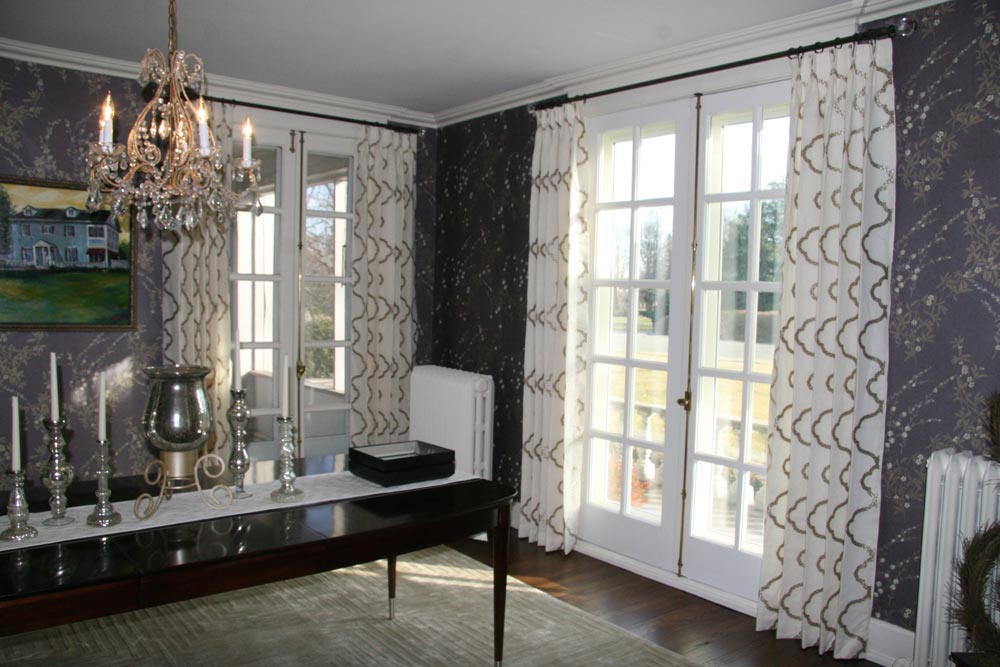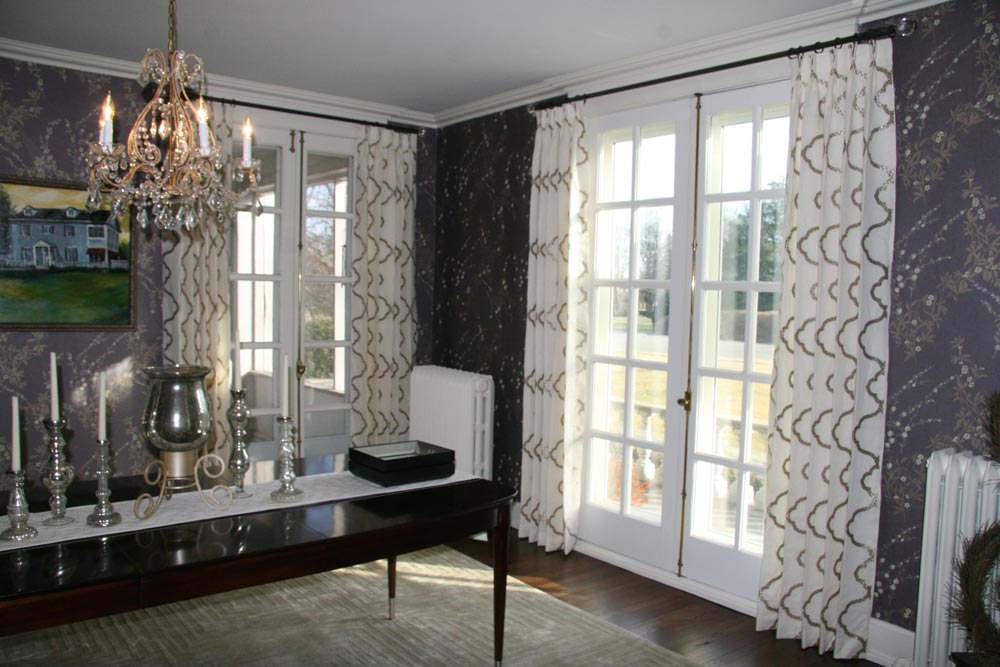Articles & Resources- old
I bet you thought we were taking the summer off, right? You pictured us floating in the lake, soaking up the rays. But in reality, we’ve been hard at work reupholstering a house full of furniture for our client’s beautiful home on Table Rock Lake.
The home was inspired by the Buffalo Bar at Top of the Rock and was skillfully built by Woodstone Builders. The living room has hand hewn Amish beams that are curved to mimic the inside of a wine barrel. The entry has brick and stone vault ceilings and there are beautifully distressed pine floors throughout. The home has a cozy, traditional feel that is reflected in the fabric choices and upholstery details.
Our client has a great eye for finding estate sale treasures. Much of the furniture was purchased at estate sales in our client’s previous home state of Michigan. She initially brought us photos of the furniture and we worked with her to find the right combinations of fabrics and embellishments to give this quality furniture a face lift.
Living Room Sofa
We really gave this sofa an update. We recovered it in Caledonia Sage Fabric by Luxury Fabrics. We added distressed hammered nickel upholstery tacks and refinished the feet to a rustic walnut to coordinate with the distressed pine floors.
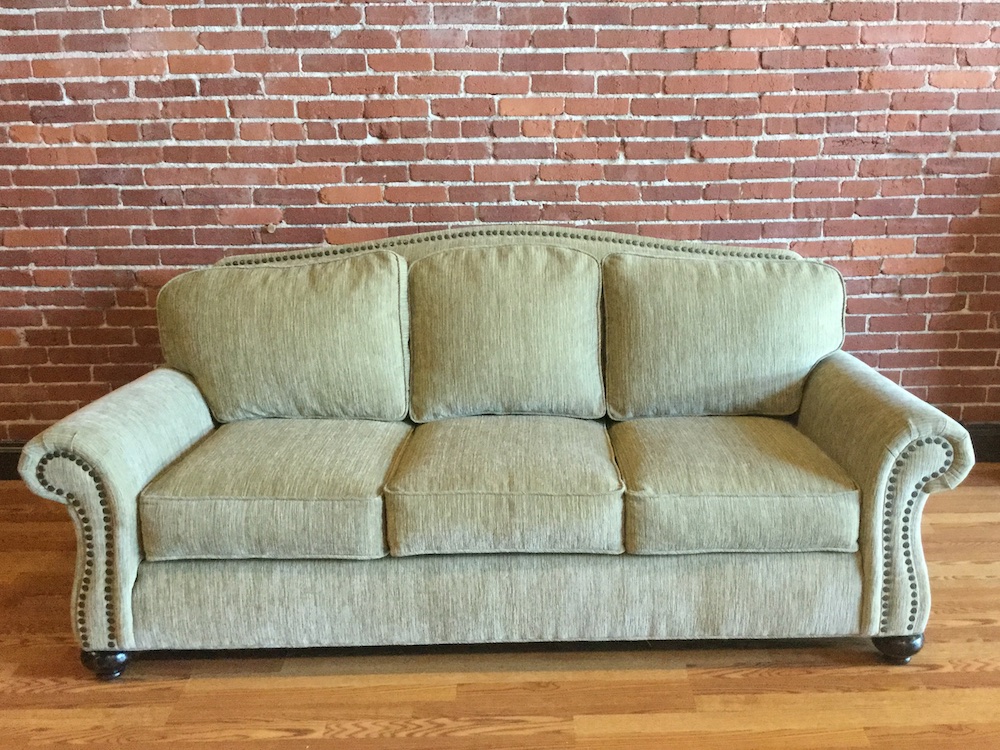
Here’s a photo of the sofa before:
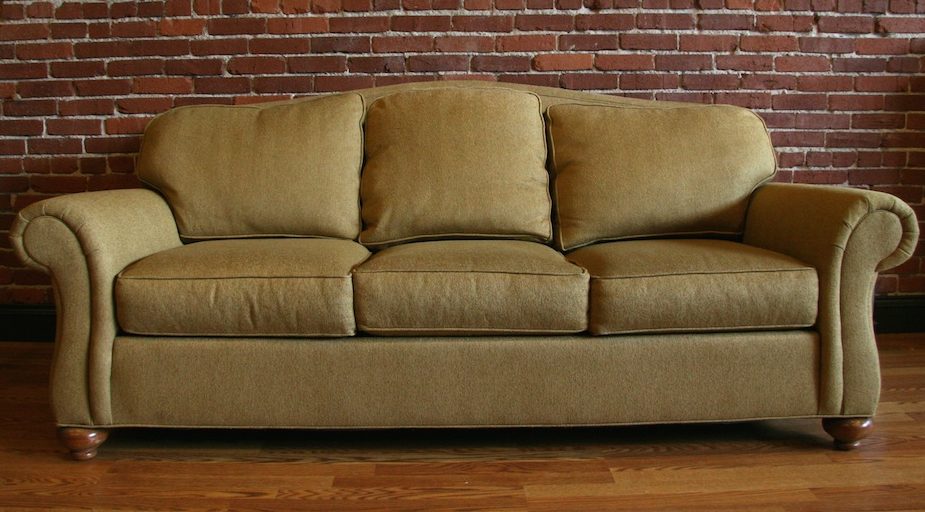
Left and Right Chaises
These chaises turned out beautifully. We recovered them with Duralee Crimson fabric in pattern 15567. We enjoyed working with this tapestry and matching the pattern from the top to the bottom of the chaises. These chaises truly were a labor of love and will be a cozy spot for our client and her two puggles for years to come.
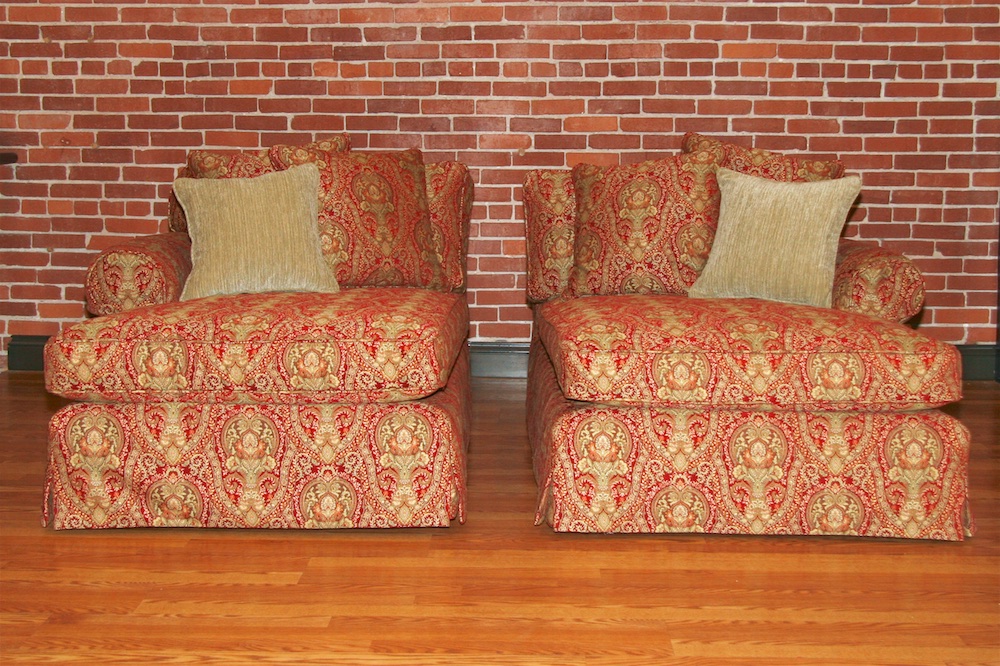
Here’s a before photo of one of the chaises:
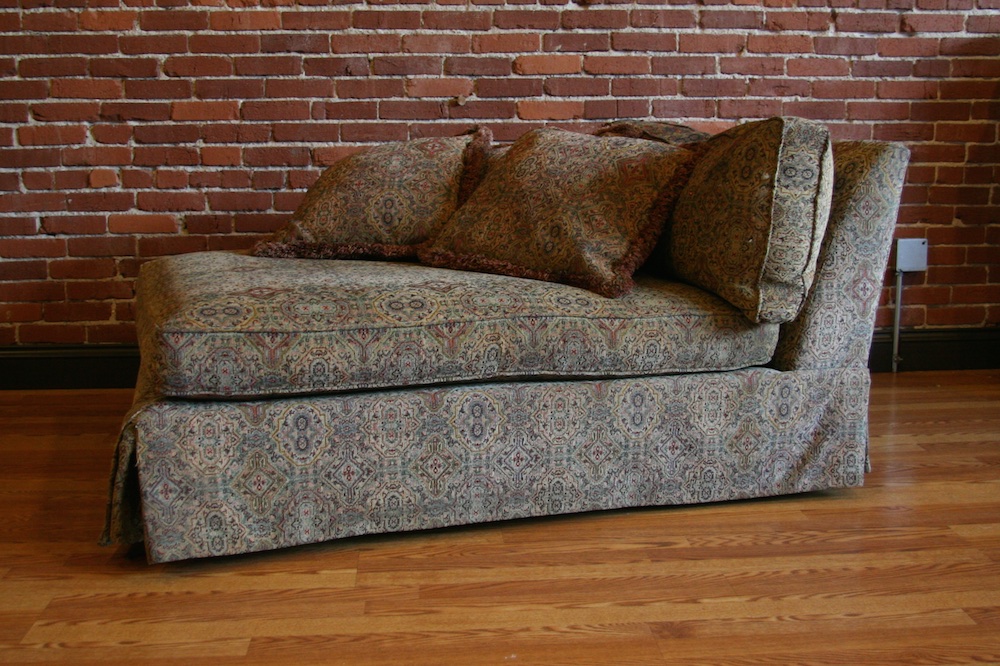
Double Chair and Ottoman
Lorem ipsum dolor sit amet, consectetur adipiscing elit. Ut elit tellus, luctus nec ullamcorper mattis, pulvinar dapibus leo.
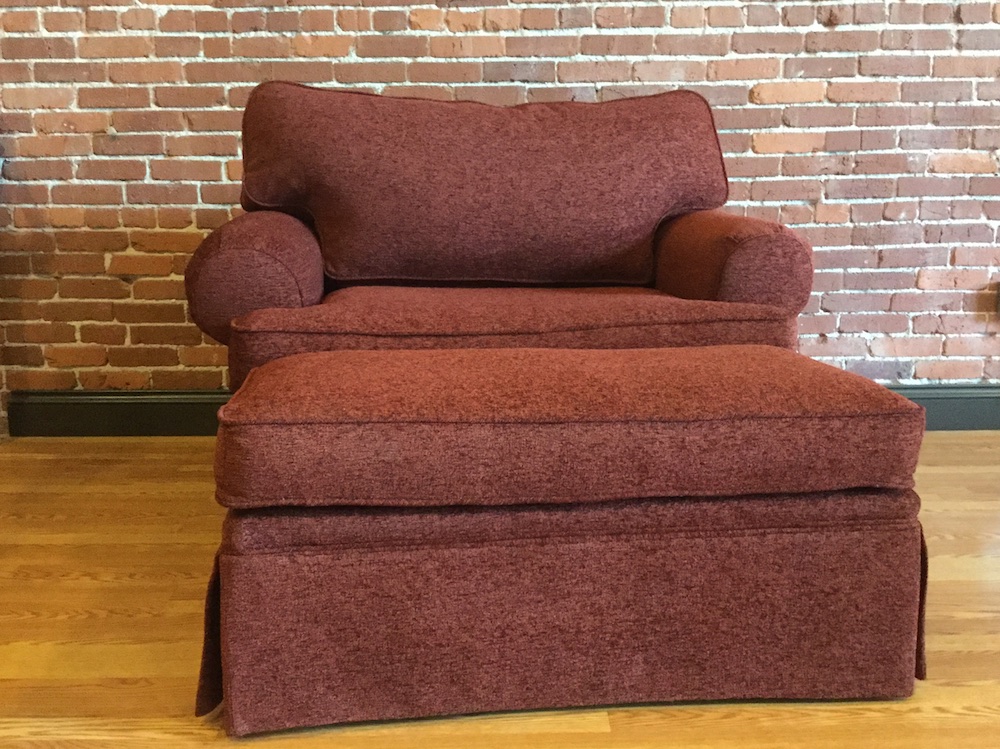
Here is a before photo of Big Momma:
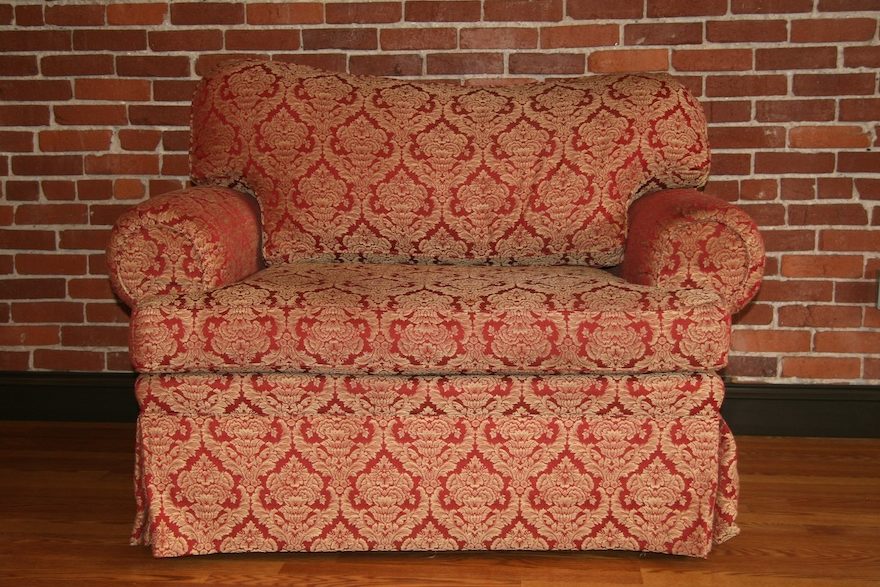
Foyer Bench
We updated this foyer bench with a black floral fabric and added coordinating sage and burgundy pillows.
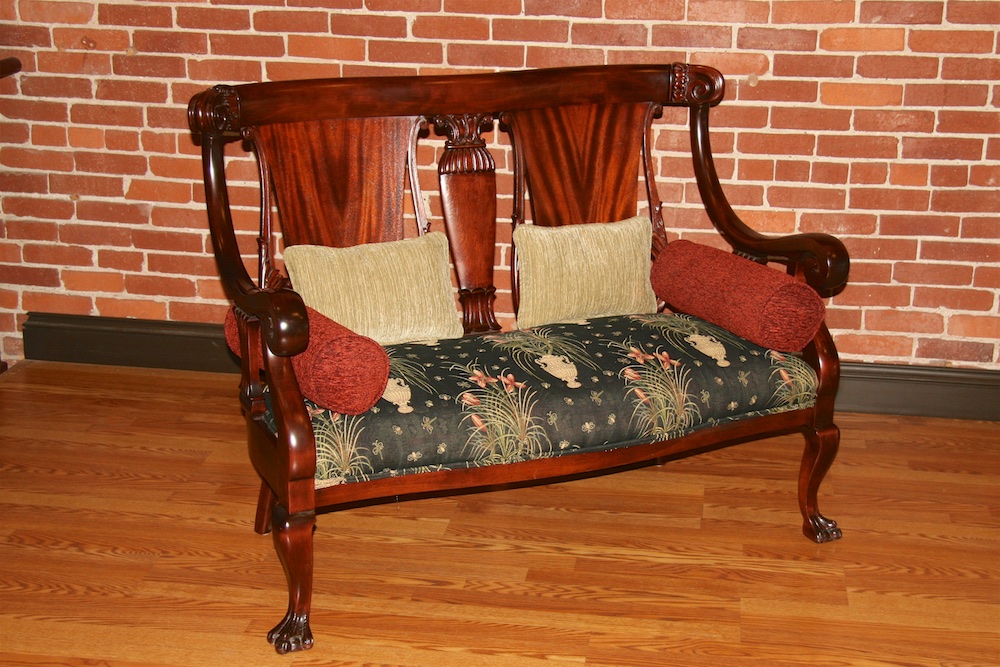
Here’s the before photo of the bench:
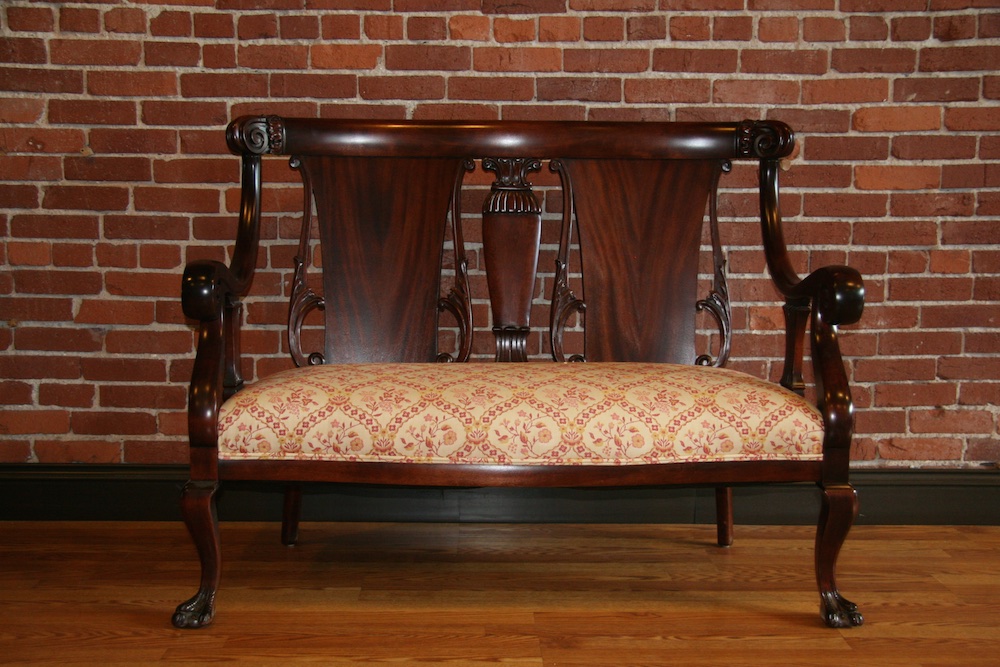
Once the home is finished and our clients are settled, we’ll get photos of the furniture installed in their Table Rock Lake home. Keep watching for the final “after” photos!
If Bridge Upholstery and Drapery can help you with your reupholstery needs, please Contact Us and send us photos of your outdated upholstery for an estimate. We’ll look forward to hearing from you!

 417-429-1243
417-429-1243 hello@BridgeWorkroom.com
hello@BridgeWorkroom.com